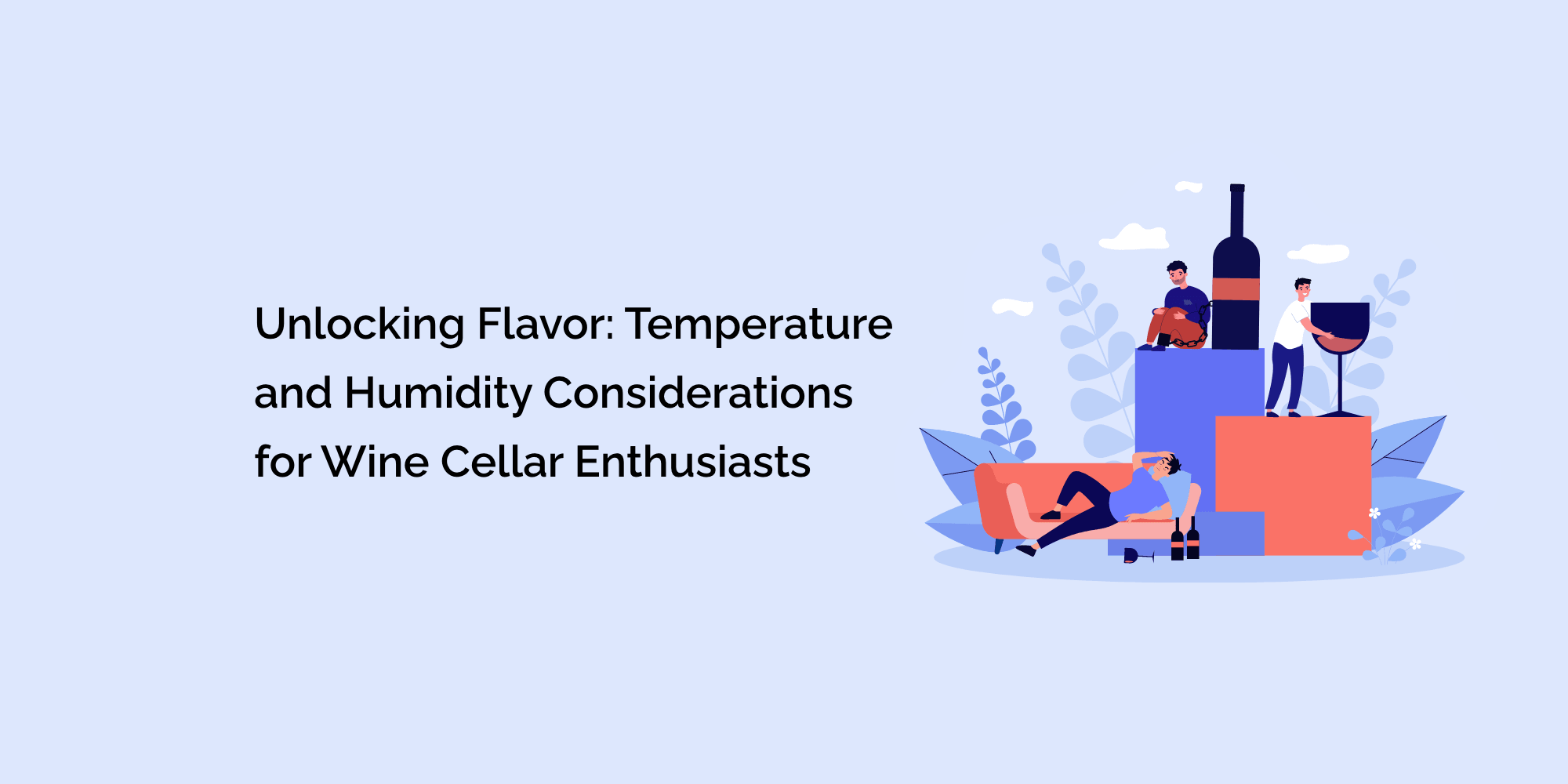For wine enthusiasts, creating the perfect storage environment is crucial to preserving their cherished bottles' flavors, aromas, and aging potential. Temperature and humidity play integral roles in wine cellar management, ensuring optimal conditions for the maturation and enjoyment of wines. In this detailed blog post, we will explore the significance of temperature and humidity in wine cellars and provide insights on unlocking your wine collection's full flavor potential.
The Impact of Temperature on Wine:
- Understanding the Role of Temperature: Temperature is one of the most critical factors influencing wine quality and aging. It affects the chemical reactions and complex interactions within the bottle, shaping the wine's flavors, aromas, and overall character.
- Ideal Temperature Range: The ideal temperature range for wine storage typically falls between 50°F and 59°F (10°C and 15°C). Within this range, wines can develop harmoniously, with red wines benefiting from slightly warmer temperatures (around 55°F or 13°C) and white wines and sparkling wines thriving at slightly cooler temperatures (around 50°F or 10°C).
- The Dangers of Temperature Fluctuations: Temperature fluctuations can harm wine quality. Rapid temperature changes can cause the wine to expand and contract, accelerating aging and potentially leading to premature oxidation. Consistency is vital to preserving the intended flavors and aromas of your wines.
The Role of Humidity in Wine Cellars:
- Understanding Humidity's Impact: Humidity levels in wine cellars directly influence the condition of the cork, which plays a vital role in preserving the wine's freshness and preventing premature spoilage. Proper humidity also helps maintain the integrity of the wine labels and prevents mold growth.
- Ideal Humidity Range: The recommended humidity range for wine cellars is between 50% and 70%. This range provides sufficient moisture to keep the corks moist and supple, ensuring a tight seal while preventing excessive mold growth.
- The Consequences of Inadequate Humidity: Insufficient humidity can lead to dry pins that shrink and allow air to enter the bottle, resulting in oxidation and loss of flavor. Conversely, excessive moisture can promote mold growth and cause label damage, potentially impacting the wine's value and aesthetics.
Tips for Managing Temperature and Humidity in Wine Cellars:
- Invest in a Reliable Temperature Control System: A dedicated temperature control system designed specifically for wine cellars is crucial for maintaining a consistent environment. These systems offer precise temperature regulation, ensuring your wines age gracefully.
- Utilize Proper Insulation: Proper insulation is essential to minimize heat transfer and maintain a stable temperature. Insulate your cellar walls, ceiling, and flooring using high-quality insulation materials to create a controlled environment.
- Consider a Climate Control System: These systems provide advanced temperature and humidity management capabilities. These systems can adjust cooling and heating functions to maintain optimal conditions, even during external weather fluctuations.
- Monitor Temperature and Humidity: Regularly monitor temperature and humidity levels using digital thermometers and hygrometers. Place the sensors in different locations within the cellar to capture accurate readings. Consider intelligent monitoring systems that offer remote access and real-time data tracking.
- Ensure Proper Air Circulation: Proper air circulation within the basement helps prevent stagnant air and minimizes temperature variations. Avoid overcrowding wine racks, allowing sufficient space between bottles for air to flow.
- Use Humidifiers and Dehumidifiers: Consider utilizing humidifiers or dehumidifiers to maintain the desired humidity range, depending on your specific cellar conditions. These devices help adjust moisture levels to protect the corks and maintain wine quality.
The Importance of Consistency and Patience:
- Age Wines Gradually: Wines benefit from slow and controlled aging processes. Avoid sudden temperature changes or attempt to accelerate aging by increasing storage temperatures. Patience is crucial in allowing wines to reach their optimal flavor profile.
- Monitor and Adjust: Regularly monitor temperature and humidity levels to identify deviations and promptly make necessary adjustments. Maintain records of these measurements to track patterns and ensure long-term consistency.
- Seek Professional Advice: Consulting with wine cellar professionals, sommeliers, or wine experts can provide valuable insights tailored to your specific cellar and collection. They can help you optimize temperature and humidity management based on the characteristics of your wines.
Certainly! Here are some frequently asked questions (FAQs) about temperature and humidity considerations for wine cellars:
What is the ideal temperature range for wine cellars?
The ideal temperature range for wine cellars typically falls between 50°F and 59°F (10°C and 15°C). Red wines generally benefit from slightly warmer temperatures (around 55°F or 13°C), while white wines and sparkling wines thrive at slightly cooler temperatures (around 50°F or 10°C).
How do temperature fluctuations impact wine quality?
Temperature fluctuations can have adverse effects on wine quality. Rapid temperature changes can cause the wine to expand and contract, leading to accelerated aging, premature oxidation, and potential flavor degradation. Consistency in temperature is crucial for preserving the intended flavors and aromas.
Conclusion:
Unlocking the full flavor potential of your wine collection requires careful consideration of temperature and humidity in your cellar. By maintaining a consistent and appropriate environment, you can enhance the maturation and preservation of your wines. Focus on keeping the ideal temperature range, ensuring proper humidity levels, and implementing advanced technologies such as climate control systems and intelligent monitoring solutions. With attention to detail, patience, and a commitment to the science of wine storage, you can savor the nuanced flavors, captivating aromas, and refined characteristics of your wines for years to come. Cheers to the art of temperature and humidity management in wine cellars!








